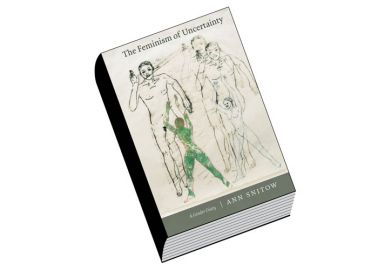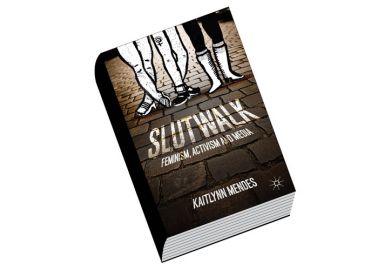The marriage, late in 1964, of the American actors Ernest Borgnine and Ethel Merman, lasted just shy of 40 days. On asking his wife how an audition had gone, Borgnine was told: “Well, they were mad about my 35-year-old body, my 35-year-old voice, and my 35-year-old face.”
“Is that so?” Borgnine responded. “And what did they think of your 65-year-old cunt?”
Merman’s killer rejoinder came back without missing a beat: “You weren’t mentioned once.”
“Cunt” is a word with an almost unparalleled power to shock, so what should we teach our sons and daughters to call the female genitals? If, while sipping prosecco and leafing through the Boden catalogue, we casually tell them to use the word “vagina”, and then silently congratulate ourselves on our “we’re terribly open with our children, don’t-you-know” values, we’re doing them a disservice. For what’s Harry to think when he learns that the word “vagina” comes from the Latin for a sheath or scabbard and has an entirely functional, not-much-fun, meaning (it’s the birth canal)?
And how is Annabel possibly going to cope when she discovers that her “vagina” is only one part of the whole genital ensemble, and that she also has labia, a vulva, clitoris and, probably, since she’s called Annabel, a gap year in Thailand, too?
Here’s the problem: “cunt” is the only truly accurate and inclusive word we have for describing the female genitalia – the functional and the fun bits, and all points in between. And yet it’s also the most taboo word in the English language. There is just no other accurate word for what Germaine Greer has quirkily described as “the whole box and dice” (a gaming image that reminds me, somewhat uneasily, of playing Yahtzee with my grandmother in Mill Hill many years ago).
We might talk of our “pudenda”, but that bastion of the lingua franca, the Oxford English Dictionary, tells us that that means “that of which one ought to be ashamed”. How did we end up in this peculiar situation where the proper word is also the most “improper” one?
In researching my book, The Vagina, I carried out a revealing survey, asking people to write – anonymously – about genitals (for many of them it made a welcome online change from rating the Ocado delivery driver).
I asked: “When you were a child, what words did your primary carer use when talking about genitalia (male and female)?” Names ranged from “private parts”, to the anatomically deeply suspect “front bottom” and “wee-wee hole”, to the poetically perplexing “lee lee”, “flower”, and “lady garden”. I also asked: “How old were you (roughly) when you first heard the word cunt?” The youngest age mentioned was five; the oldest was 25. Most of my respondents said that they did not use the word regularly, and almost a third thought it “ugly”.
The fear of that little word both derives from, and reflects, the fear of the thing itself. The myth of the vagina dentata (the “toothed vagina”) has served universally to perpetuate a morbid fear of women’s genitals. The cunt is less the “c-word” (that euphemistic abbreviation so many of us encountered as children) than the don’t-see-word, the reality of which is somehow hidden both in pornography and in medicine. And the threat of castration (more properly, perhaps, of amputation), although a fiction, can be used to justify the maiming of women’s bodies; to legitimise, or even to promote, practices such as FGM (female genital mutilation).
The idea of the vagina dentata is, for example, vividly illustrated in a design on an ornate 11th-century Pueblo Native American Mimbres myth bowl, which shows a rather startled figure with an unambiguously toothed vagina straddling a male figure, whose penis (which resembles nothing so much as a hockey stick) penetrates her. Rapacious women also feature in a 20th-century Zuni (New Mexican) myth, in which twin brothers encounter a woman whose eight granddaughters they outwit by violently knocking out the “teeth” with wooden dildos.
Today, the dentata myth is literalised by a small minority of Kenyan Nandi people for whom the clitoris continues to represent a tooth in need of brutal excision; similarly, in Mali, some of the Dogon in Mopti and Bamako continue to practise FGM. And they are not alone, of course: the World Health Organization estimates that there are more than 125 million women living with the after-effects of FGM “in the 29 countries in Africa and [the] Middle East where FGM is concentrated”. The folkloric tales of the vagina dentata, for all their mythological and metaphorical narrative qualities, are not merely remnants of some age so distanced from our own. They are the lived reality of many women’s lives, and they cannot be dismissed merely as fictions recalling long-outdated traditions.
Across cultures and across time, then, the myth of the vagina dentata has added weight to cultural practices designed to subdue women and has allowed men to fashion themselves as conquering heroes. The vagina dentata, it would seem, exists mainly in the imagination of the – often extremely anxious – beholder. Its influence, however, is still deeply felt, and this is why my book ends with a plea. If our sons and daughters cannot accurately describe the female genitals, how will they end the graphic exploitation of them?
What’s beyond dispute is that “cunt” is a word with a resonance that makes it at once terrifying and exhilarating. If we salvage it, might we fundamentally reclaim the right to talk about, and challenge, the significant issues it currently eclipses? Or, if it has gone too far into the realms of the dysphemistic and the taboo, then let’s find another word to acknowledge the richness of women’s sexual identities and desires.
We need a name that will help us to discuss, and to celebrate, to reveal, and to assimilate, the named.
Emma Rees is professor of literature and gender at the University of Chester. Her book, The Vagina: A Literary and Cultural History, is published by Bloomsbury.
Postscript by the author: when writing about being silenced...is silenced.
My talk, ‘Vulvanomics’, at the Feminism in London conference last month was well-attended by enthusiastic and engaged delegates. It focused on what the real-life implications are for women who are, in effect, silenced because the only accurate word we have for talking about our genitals in toto is also the most taboo word in the English Language.
A website editor approached me to ask if I’d write a tie-in piece on the problems people have in talking about vaginas. I agreed. I wrote the article and waited. And waited. And then came the email: “I'm really sorry to have to tell you this, but I'm afraid our Editor has spiked the piece on the grounds of taste.”
The irony was almost overwhelming. Happily, Times Higher Education has an immeasurably better sense of what’s actually “obscene” and what’s not. The article above is that piece in full.
Register to continue
Why register?
- Registration is free and only takes a moment
- Once registered, you can read 3 articles a month
- Sign up for our newsletter
Subscribe
Or subscribe for unlimited access to:
- Unlimited access to news, views, insights & reviews
- Digital editions
- Digital access to THE’s university and college rankings analysis
Already registered or a current subscriber?







